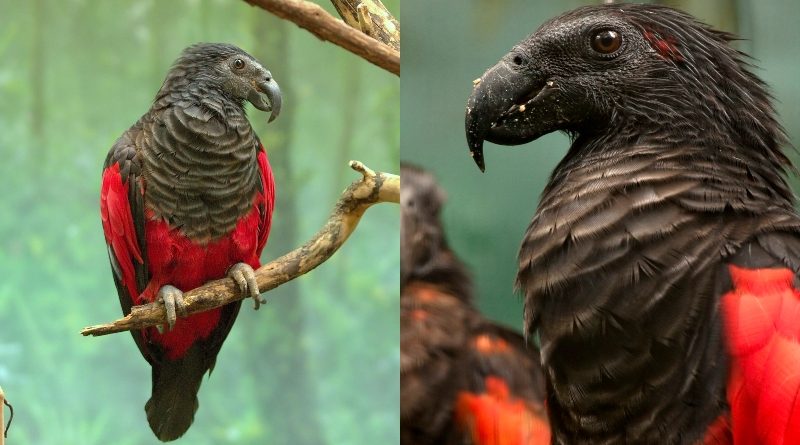The Dracula parrot is amazingly beautiful but terrifying with the body of a parrot and the head of an eagle.
Also called Pesquet's parrot, the Dracula parrot is found in the lower mountains and foothills of New Guinea's cloud forests.
The bird can reach a body size of 18 inches, with measurements of almost a meter from beak to tail.

Some striking features of this majestic bird include its brightly colored scarlet plumage. This contrasts perfectly with its dusty grey chest, back, and tail.
Males have a red patch behind their eyes, which is the only physical distinctive feature between males and females.
These birds travel in pairs or small groups and glide more often than most parrots.
Another difference from other parrots that climb from branch to branch, the vulturine parrot jump instead.

There are a few reasons why this bird is called Dracula parrot. And one of the reasons is that this bird has a downright terrifying call.
According to World Parrots Trust, it sounds "harsh and rasping; also described as growling. Also, drawn-out scream gave frequently in flight."

Dracula parrot is also one of the three parrots with featherless faces. According to researchers, the bare part of the head is an adaptation that develops to avoid feather-matting from sticky fruits.
The bird is a highly-specialized frugivore, eating almost a few species of figs, flower blossoms, and nectar.
Unfortunately, these birds are is decreasing at a rapid rate, with less than 50,000 mature parrots left.
The Dracula parrot's decline is mainly due to poaching for its beautiful bright red and dark grey feathers. Some communities use these feathers to make traditional ceremonial dresses.

Dracula parrot is also killed for meat and captured for the cage bird trade. And the loss of the bird's habitat now has the species listed as vulnerable.
According to Red List:
"Hunting for feathers has increased with population growth. Current rates of decline due to hunting are uncertain but could be relatively minor…"
"The species appears secure in large areas of suitable habitat in central and western mainland Papua New Guinea. Much of [this] occurs in rugged terrain in areas with a low human population density."
That means the Dracula parrots live longer and better lives in places with fewer people, like in New Guinea.
New Guinea has an immense biodiversity, containing between 5 and 10 percent of the planet's total species. This proportion is about the same amount as that found in Australia or the United States.
Most New Guinea species are endemic, and thousands are still unknown to science.



